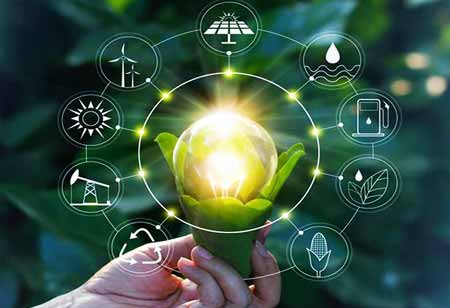Thank you for Subscribing to Energy Business Review Weekly Brief
Advances in Energy Storage Systems for Renewable Source Grid Integration
Power generation using renewable energy sources has reduced the use of hydrocarbons for power generation and transportation.

By
Energy Business Review | Monday, November 27, 2023
Stay ahead of the industry with exclusive feature stories on the top companies, expert insights and the latest news delivered straight to your inbox. Subscribe today.
Power generation using renewable energy sources has reduced the use of hydrocarbons for power generation and transportation. Power generated from renewable energy sources can be integrated into the grid in connected mode or can act as an independent power island. Renewable energy supplies 14.8 per cent of the total industrial energy demand, mainly for low-temperature companies. However, for heavy industries such as iron and steel, cement, and chemicals, renewable energy accounts for less than one per cent of the combined energy demand. Today, an energy mix of electricity, solar, wind, and nuclear is used to supply loads in many countries around the world, with other energy forms accounting for less than one per cent of total energy demand.
The intermittent nature of renewable resources challenges the performance of the grid by introducing issues with system stability, reliability, and power quality. The variability and uncertainty of power output are the two primary problems hindering the bulk integration of renewable energy sources with the existing grid. Introducing energy storage systems (ESSs) to the grid can tackle the variability issue by decoupling the power generation from demand. Additionally, the ESSs enhance the power quality of the grid by providing ancillary services. The energy storage demand will continue to grow as the penetration of renewable energy into the electric grid increases every year.
ESSs facilitate technologies for well-established and new applications like power peak shaving, electric vehicles, the integration of renewable energy, and so on. ESSs make the grid more reliable by acting as a power source or offering various functions such as spinning reserves, power quality and fluctuation minimisation, and load levelling from renewable energy sources.
Large ESSs are routinely used with renewable generation, such as wind, to stabilise the power output. There is a big opportunity to transition to a carbon-free energy future by incorporating ESS with renewable power. ESSs with high ratings and a long duration will play a significant role in reducing the environmental impact of conventional power sources.
The worldwide revenue from energy storage for renewables integration will exceed 23 USD billion shortly, and the requirements for storing energy will triple their present values by 2023. Solar energy has surpassed grid parity, and many markets no longer require policy incentives to encourage deployment. However, energy storage mechanisms encounter several challenges, and no storage type has the complete characteristics required by the modern grid. For example, limitations like storage capacity, response time, efficiency, cost, and implementation need. Some ESSs, like batteries, also have an environmental impact by releasing toxic gas.
There are several ESSs available commercially, but the requirements of DER integration into the grid require more than one energy storage system. The rapid growth of power generation from renewable energy sources leads to the deployment of large-scale, cost-effective energy storage systems as a necessity for the reliability of the power system. As renewable energy sources are of different types, a wide range of storage systems is necessary to accommodate the specific needs of each source.






